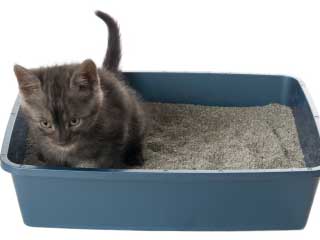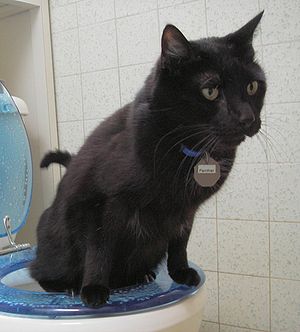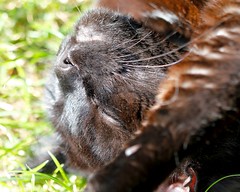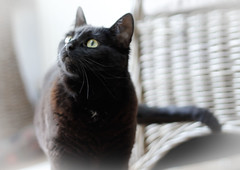Cats are notoriously independent. They’ll do what they want, when they want—you just supply food and water. But cats can’t handle everything on their own. Sometimes, they need your help. If your cat has gotten into something and now has a case of cat constipation, he needs your help! But your feline friend can’t tell you this, and you might have a hard time spotting the symptoms.
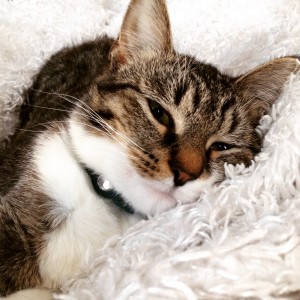
How to Spot the Symptoms
If you suspect that your cat is constipated, look for these telltale signs. First of all, check out your cat’s posture. A constipated cat will hold himself in an unnatural or hunched posture. You can also watch for vomiting, poor appetite, and lethargy. Cats with constipation may avoid the litter box—or they may visit frequently without actually doing any business. You might also hear your cat make sounds of discomfort.
A healthy cat should have a bowel movement at least once a day—possibly more often, depending on his diet. Older cats or those who’ve recently been ill may go longer between bowel movements, but this time should never extend beyond 48 hours.
The Causes of Cat Constipation
Many things can cause cat constipation. Dehydration and intestinal blockage from hairballs or foreign objects are two common causes. Your cat could also get too much or too little fiber in his diet. Stress can also cause cat constipation. Things like moving, the presence of another aggressive pet, or environmental factors affect pets just as much as humans—possibly even more.
Use Lax-Eze to Relieve Cat Constipation
If you cat has any of these symptoms, begin treatment with our Lax-eze anti-constipation aid. It comes in both granules and liquid form, or in a full treatment pack that includes both a 10oz jar of granules and a 2oz bottle of liquid for severe or frequent cases constipation.
Since Lax-eze is all natural, you don’t have to worry about it interfering with any of the medications that your vet prescribes. The formula is completely safe. You can use it either alone, or in combination with traditional veterinarian-prescribed medication. Lax-eze is perfect for regulating and normalizing your cat’s digestion and relieving his constipation. Plus, it’ll make his coat healthier and give him more energy. Get Lax-eze and relieve your cat’s constipation today!


